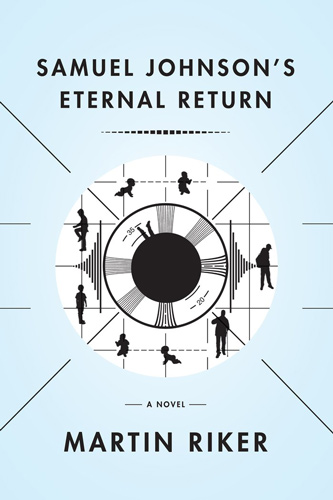Samuel Johnson’s Eternal Return
Samuel Johnson’s Eternal Return is the needle and thread that connects life and death, grumpy old man and flâneur. The story revolves around a fellow named Samuel Johnson who dies protecting his son from an armed lunatic. He then enters into the body of the lunatic as a passenger, watching the world like a TV show through the eyes of his own murderer. Eventually, the lunatic dies, and Samuel Johnson bounces from body to body, hoping to one day reunite with his son.
Samuel Johnson’s Eternal Return is the needle and thread that connects life and death, grumpy old man and flâneur. The story revolves around a fellow named Samuel Johnson who dies protecting his son from an armed lunatic. He then enters into the body of the lunatic as a passenger, watching the world like a TV show through the eyes of his own murderer. Eventually, the lunatic dies, and Samuel Johnson bounces from body to body, hoping to one day reunite with his son.
The story begins in Unityville, Pennsylvania: a once-upon-a-time religious community without televisions and many of the other luxuries that modern-day humans associate with entertainment and pleasure. It reminded me of the Shakers’ Niskayuna, or any such detached “paradise” that would exist in Erik Reese’s Utopia Drive: A Road Trip Through America’s Most Radical Idea.
To the narrator’s surprise, a television set winds up in Unityville, and he becomes engrossed in the idea of escaping reality, almost to the level of addiction. The novel uses television as a means of interpreting time, which I find, well, entertaining. When the TV is first introduced to Samuel, he watches Gunsmoke and Zorro, among others, and as the book develops, Fear Factor and America’s Next Top Model sidle into the limelight. Riker does an excellent job making the narrator and his surroundings adapt to the everlasting movement of time. Darwin would say that this is necessary to avoid death—perhaps death of the plot, as well—but is death really so horrible? I would argue that Samuel Johnson proves it to be synonymous with life.
First and foremost, one of the earlier surrogate bodies that Samuel Johnson occupies is named Christopher Plume: a young, bookish sailor who comes to the conclusion:
“Life is about being bothered! [ . . . ] It’s about forcing yourself beyond those familiarities to talk to people and do things and try things even when you don’t wish to, even when, not only do you not wish to, but also know perfectly well you won’t enjoy it when you do!”
If this is true, then death, in Riker’s mind, must be the same, because over and over, Samuel must force himself to do and try things he knows he won’t enjoy, but does anyway in the attempt to reach his destination.
While Samuel is on his own journey through whatever (un-)consciousness he exists in, the people he tags along with are also riding their own, individual waves across the ocean of being, which adds such an incredible layer of depth and duality to the novel, reinforcing the notion that life and death are one-in-the-same.
The existential, nineteenth-century thought-experiment of the “eternal return” is, clearly, the driving force of the novel. It’s the question of, “If a demon approached you, and explained that you had lived your life millions of times before, and you will continue to live it millions of times again, are going to gnash your teeth into the ground, or does that revelation excite you?” The doctrine was popularized by Friedrich Nietzsche, but Riker suggests that it originated from the German poet, Heinrich Heine.
Toward the end of the novel, the narrator goes on a philosophical tirade about Nietzsche’s key mistake, which was assuming “a present that departs then cycles back, rather than, [ . . . ] a reality in which everything exists in a state of perpetuity and nothing ever leaves.” He discusses this, and “what we call ‘the future’ is the set of attentive acts that we have yet to take notice of in the illusory forward extrapolation of the current manifestation of Attention’s self-awareness.”
This is probably my favorite part of the book, but I did get a little upset with the narrator’s interruptions. For example, in the middle of the aforementioned, conceptual purge, he stops to say, “And let me here take a moment to congratulate anyone who has read to this point in this book.” Riker does this on many occasions throughout the novel, and I find that it severs the reader’s attachment to what would otherwise be regarded as transformative literature.
Yet, when I consider Samuel, trapped inside of these vehicles, it is easy to understand why someone might want to push themselves into the driver’s seat, so as not to be forgotten. Sometimes, though, it’s best to stay put and look out of the window, because before you know it, Zorro will have turned into America’s Next Top Model.





